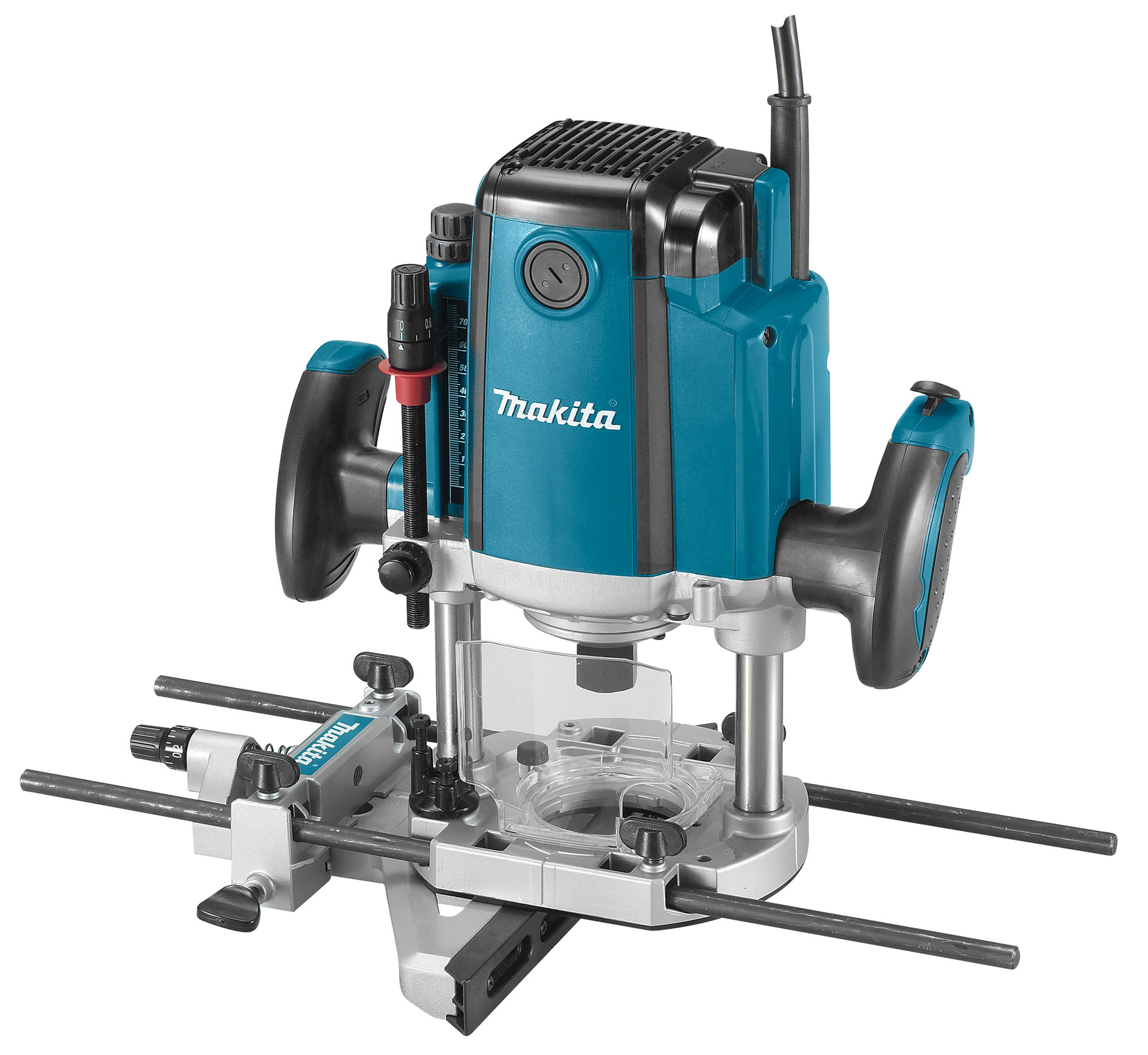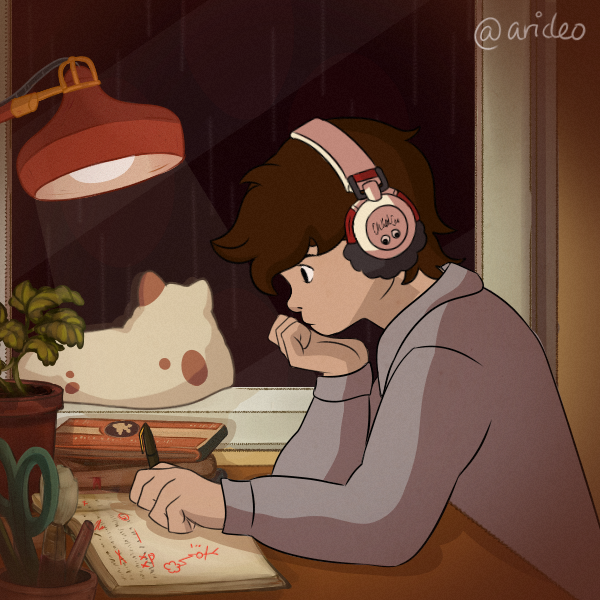“never plug extension cords into extension cords” is probably the most common piece of electrical related advice I’ve ever heard. But if you have, say, 2 x 2m long extension cords, and you plug one into the other, why is that considered a lot more unsafe than just using a single 4 or 5 meter cord?
Does it just boil down to that extra connection creating another opportunity for the prongs to slip out and cause a spark or short circuit? Or is there something else happening there?
For that matter - why aren’t super long extension cords (50 or more meters) considered unsafe? Does that also just come down to a matter of only having 2 connections versus 4 or more on a daisy chained cord?
Followup stupid question: is whatever causes piggybacked extension cords to be considered unsafe actually that dangerous, or is it the sort of thing that gets parroted around and misconstrued/blown out of proportion? On a scale from “smoking 20 packs of cigarettes a day” to “stubbing your toe on a really heavy piece of furniture”, how dangerous would you subjectively rate daisy chaining extension cords, assuming it was only 1 hop (2 extension cords, no more), and was kept under 5 or 10 metres?
I’m sure there’s probably somebody bashing their head against a wall at these questions, but I’m not trying to be ignorant, I’m just curious. Thank you for tolerating my stupid questions
The longer the distance, the larger the diameter of the wire you need, due to resistance/heat.
Typically, extension cords are going to be manufactured with the thinnest wire they can get away with based on the safety requirements, in order to save on materials cost.
So plugging 2 short cords together might cover the same distance as 1 longer cord, but the longer cord will use thicker wire to maintain the proper margin of safety.
Said another way: Each cable is given the minimum copper and shielding that cable needs for the length it is made.
As soon as you plug two together, you’re operating at greater resistance than either one was made for, and relying on the margin of error.
I’ve run a full DJ setup with speakers, a mixer, soundboard, laptop, etc. off a single line of 6-8 daisy-chained extension cords more times than I can count.
…uh…how have I never learned of this.
DJ’s really will find any excuse to tell you they’re a DJ
Edit: you wrote and deleted a super unhappy message so just wanted to say sorry, I was just being goofy not trying to rag on you
deleted by creator
Honestly that’s probably not a huge electrical load.
Because you ain’t loud enough lol
But unless coiled up on the ground the longer cable also has more area to dissipate heat, so the longer cable doesn’t change anything here. The heat output will be consistent for any section of the cable no matter how much more cable there is on easier side of it.
The only think that the different resistance would affect is the voltage drop to the end device. But voltage drop varies wildly so you are unlikely to have a meaningful difference caused by a few extension cords (unless maybe you are already a bad case like an apartment building to start).
The longer wire (being also thicker) has less resistance and is therefore wasting less power as heat, that’s where the Voltage drop is going.
Sure, most of the time it’s fine if you know what you’re doing, but that’s why it’s general wisdom and not a hard rule, like “don’t put metal in the microwave”, it’s said to protect those that have no idea what they’re doing/why the saying exists
Resistance of a cable is (resistivity x Length)/(πr^2) so the residence increases with length, which is why longer extension cords are designed thicker to reduce resistance. Power grids are voltage stabilized so the voltage drop will be negligible but it will take more power to get down the daisy chain, producing more heat.
And temperature difference to ambient temperature is
thermal resistivity * dissipated power / (2\*π\*radius\*length). If you will plugdissipated power = resistance * current^2and resistance into it, you will see, that temperature difference is invariant of length.
Distance by itself would be no different than a single cord of the same length.
However, connection points are areas of localized resistance where connectors meet. This can introduce dangerous areas.
That said, those aren’t really the problem here:
The practical, human, problem here is important. Connectors come loose, which makes them dangerous. The majority of this thread is treating this question like a paper test problem, when in reality there are other factors that outweigh the “under ideal circumstances” problem.
I have no idea whether this really is the answer but it seems like the most plausible answer.
The longer the wire, the more heat it can dissipate, so no, you don’t need wire to be thicker.
Not sure if you’ve ever used fuse wire before. It’s what was used before capsule fuses and breakers. Essentially, if too much current goes through it, it will melt, breaking the circuit as protection. The thicker the fuse wire, the more current it can pass through without melting. The length of the wire doesn’t come into it. 1cm of 10 amp fuse wire will melt at the same current as 1 meter of 10 amp fuse wire.
Yes, maximum carried current is indeed invariant of length. I explained math behind it in https://lemm.ee/comment/17115060
We may be discussing slightly different things here, I’m not sure if I follow the application of your math in this context.
My point is that a thinner wire will get much hotter than a thicker wire, given the same amount of current. Is this not the case?
Correct. And temperature does not depend on length. We already said it.
Meanwhile landlords: "one 50 year old outlet should be enough for two bedrooms right?*
Removed by mod
This, along with hotels that hide their only power point behind the bed but have 50 bloody phone jacks, are my pet peeves. But it kinda makes sense when you consider they were mostly built before the days of having a ton of devices in the bedroom. A lamp and alarm clock, maybe a TV if you’re well off, would’ve been perfectly fine for a lot of people
The absolute worst is when the Word Documents are stashed away in some random drawer. Or when you find an Excel spreadsheet under the mattress!
Not so awful, but it’s disappointing when you open the drawer expecting a Bible, but there’s only OneNote there.
I really wish my autocorrect would stop doing that. I can count on one hand the amount of times I’ve actually wanted to write “PowerPoint”. I couldn’t even count on 10 hands the amount of times it’s assumed I’m some kind of idiot that doesn’t know “PowerPoint” is a single word when I type “power point”
I like when it only autocorrects the second word. “I’m going to home Depot”
I once read a theory on an electricians forum about how the USA electrical code’s mandated maximum distance between adjacent outlets on a wall, coupled with the typical bedroom layout, as well as home builders trying to be as cheap as possible, led to only a single outlet being placed directly in the middle of the longest wall. This is also the most logical position for a bed, so the theory is that the bed pressing against the outlet over time was a contributing factor to electrical-related house fires.
I cannot find where I read that originally, and certainly the granularity of nationally-reported fire data is not sufficient to prove that theory. And while the electrical code’s distance requirements haven’t changed, more homes will now put enough outlets so the only one isn’t behind the bed.
Years ago, I used to play live music. We played in a lot of shitty dive bars. Thinking back on all the ancient decrepit plugs we used to power our instruments, amplifiers, and stage lights with…it’s a miracle we never started a fire. Nightmare fuel now that I’m older and a little bit wiser.
deleted by creator
lol “gauge”
americans will use anything except the metric system
16 AWG – 1.3 mm^2
14 AWG – 2 mm^2
12 AWG – 3.3 mm^2
10 AWG – 5.2 mm^2For us from the civilised part of the world ;-)
However, as in Europe we have 230 V system, approximately half the cross section, as stated in the table above, is sufficient.
Edit: This is how the above text should be displayed:

Both are measurements of cross-sectional AREA and are defined in terms of square millimeters (mm^2), not mm.
That’s exactly what I wrote.
mm^2should be rendered to square millimeters (mm^2 ) by the browser / app.
In my understanding, ‘cross section’ always referrs to an area. The other property would be the diameter which is measured in units of length.Sorry, that’s not what I see.
Interesting, what do you see then?


Fwiw, it looks fine using Voyager
I’ve always found gauge to be especially odd, because the number gets smaller as you go bigger, so at one point you can’t go any further even though you can go fatter.
Yup, I work with 4/0 (0000) cable pretty regularly, for things like generators or powering large systems. We have a few trunks full of cable, and it takes a crew of 2 or 3 to actually lay it because it’s so heavy. Usually one person pushing the trunk along, one focuses on uncoiling it from the trunk, and one focuses on actually laying the cable. We use five conductors at a time (one neutral, three 120v hots leads, and a ground,) so it’s a big bundle. Each cable weighs a little over a pound per foot, and there are five bundled together. So a 150’ coil can easily weigh 750-800 pounds.

Oh ffs I should’ve known.
What is the metric unit for cables?
for cross-sectional area? mm2.
Is it just me or is anyone else perturbed that the cable sizes in this infographic are all the same gauge?
the cable sizes in this infographic are all the same gauge?
They’re not. They are clearly marked as different gauges, except the left most two which have different plug types… one is two prong, the other is three prong.
Do you just mean the art showing them as the same size? Because that’s common in a lot of infovraphics to not be to scale if they are clearly labeled
a 50ft 12 gauge extension cord is about $40
$40USD would be $58CAD.
A 50-ft 12-gauge extension cord costs $112+ CAD anywhere in Canada. A 100-ft is $200+ CAD. Like… fffffuuuuuck.
Space heater is “medium duty” while a router is “heavy duty”?
This is also known as a router

Oohkay.
It’s for putting holes in things. Creating routes? I dunno.
Exactly, can be used to round off corners and all manor of nifty woodworking. Keep hands away from the spinny bit.
router as in ‘tool for finer details in woodworking.’ most router motors can spin at 10000rpm at their lowest and anything with a motor, by definition, uses more power than something without a motor
deleted by creator
It doesn’t make sense. Temperature difference does not depends on length.
Adding length creates more resistance which creates more heat. Thinner conductors can’t handle it as well.
And more surface area for heat dissipation. https://lemm.ee/comment/17115060
They cancel out.
TIL. Maybe I was conflating daisy-chaining power strips with extension cords and came up with that as a reason it was bad with the cords.
There are two things going on here.
The first is that yes, more connections causes more opportunities for the plugs to slip. So you can get short circuits or even arcing that can start a fire.
The second is that the wire in the cord has a certain rating on it. Many of those cords do not use 12 (20 amp) or 14 (15 amp) gauge wire; so, they’re not rated for the full capacity of the wire in the wall. The breakers are sized to protect the wires in the wall, they don’t know anything about the things plugged into them. So what can happen is you plug too much into the extension cord (particularly if it’s a power strip) and the load on the extension cord is not enough to trip the breaker (because the walls are fine) but it’s enough to overload the extension cord wire. In other words, the extension cord can start getting so hot it melts and possibly arcs up as the insulation fails.
You can have a fire from overloading a single power strip in just the same way. However, the more you chain together, the more likely you are to overload the power strip.
Ideally, you just think about what you’re doing… But historically the easy answer is just to tell people not to chain things.
In short it’s not about the distance, it’s about the insulation and quality of the wire itself along with the number of connections.
Awesome answer - thank you!!
Although I guess a more general question - why aren’t all power boards and extension cords mandatorily fitted with their own circuit breakers/overload protection circuits? I guess it’s cheaper to just tell people never to daisy chain, but at the same time, when you factor in overall costs incurred by anybody (or insurance companies, etc) from people unintentionally overloading them and causing them to melt and burn down houses, wouldn’t it be in everybody’s best interests to raise the price a few dollars and include a resettable overload protection system?
Technology Connections made a 25 minute video about American extension cords and why they’re dangerous, if you want to watch a long form answer.
Edit: oops, just saw I’m late to the party with this video
iirc British plugs do have a fuse built in to every plug, but they are also the only ones who do that
Some power systems do actually put a fuse in the extension cord… I think it’s the UK that does this. Basically every power system other than the US uses different (safer) plug designs that solve the arcing problem.
In practice daisy chaining rarely causes a serious problem and it makes things more expensive so it never really became a thing that was legislated or common within the US. Similar to how the plug designs themselves rarely cause a problem so it hasn’t made sense to actually change them.
Related thing about extension cable reels that many don’t know is that even if you need like 3 meters of cable you should still unspool the entire thing as otherwise it’s acting as a coil and creating
resistanceheat. Most cable reels have different ratings marked on them for when they are spooled / unspooled. This is especially true when the device you’re powering takes >1000 wattsMany years ago, my mother used the electric lawn mower without unspooling all the wire. When it finally shorted, all the plastic wire insulation was in the process of turning into a melty plastic soup. A Lesson Was Learned.
The reason isn’t resistance - it’s that the coiled wire makes an electromagnet that stores energy in the magnetic field. The alternating current in the mains switches 50 or 60 times a second. In each cycle the magnetic field is created, destroyed then recreated in the opposite direction, then destroyed. This dumps a lot of energy (and therefore heat) into the coil.
The coil wouldn’t make a significant magnetic field because the cable has two wires with opposite current flow in close proximity
But when the cable is coiled, its ability to dissipate heat is less, so normal resistive heating can create higher temperatures
Inductance is not the reason here
Yes! There is a video about this. Heat in spool of cord is trapped.
First, I’m not an electrician, or anything even vaguely approaching one.
I’ve never heard that advice with extension cords, only power strips.
You could theoretically link enough extension cords together to cause problems, but it would need to be some extremely shit extension cords or a LOT of them. Resistance increases over distance, which in power cables manifests as them getting hotter. That isn’t a problem until all the sudden it is a problem.
For power strips, the main danger is that you’re potentially introducing more outlets than any of them are rated for. If you’re just using 2 3ft power bars to functionally make a 6ft cable that you’re only plugging a single thing into… you’re fine. Or at least I was, idk I did it for like a whole year. If you’re plugging 16 things into a single wall outlet via power strips you can trip the circuit breaker, or potentially much worse stuff can happen like things getting melty and starting a fire.
If you know enough of what you’re doing to math out the power draw+what your outlet/power strips are rated for you can pretty (afaik) safely daisy chain them if you wanna.
Yeah, there are two components here
- Adding extra length.
- Adding more outlets.
2 is the main problem, but you need a little of 1 to have it fail in an unsafe way (ie. not just tripping the circuit breaker).
If you just add a lot of extra outlets and plug lots of stuff in then you will simply trip the circuit breaker. (Assuming that everything is properly set up according to code.) In order to create a problem you need some extra wiring that is rated for less load than the wall wiring. (Now in practice every splitter has some amount of wiring, so these can be the same device, but most power bars are rated to be “fully used” or have a fuse internally). So the problem looks something like this:
- Have a 20A wall circuit.
- Plug a 10A extension cord into it.
- Plug a power bar or other splitter into the extension cord.
- Put enough devices into the splitter to generate 15A of current.
Now you are overloading the extension cord and risking fire.
On a scale from “smoking 20 packs of cigarettes a day” to “stubbing your toe on a really heavy piece of furniture”, how dangerous would you subjectively rate daisy chaining extension cords
As dangerous as one extension cord of their combined length. Don’t forget to verify that every cord rating is above load rating. I recommend to use at least same rating as circuit breaker or get extension cord with circuit breaker built in and never decrease rating down the line without circuit breaker before it, so even if you somehow overload it, there will be protection from it.
AND NEVER COIL OR THERMALY INSULATE! Cords rely on convection for heat dissipation, and spooling and insulating reduces it, thus increasing electrical insulator temperature until it melts and spontaneously combusts. This applies to extension cords in general.
Because this is the Internet, I’ll be pedantic and say the interface where each cord plugs into the next probably adds some resistance as well.
So, 50 cords 1 ft each plugged into each other would have a higher resistance than the same wire at a single 50ft length.
I doubt it really matters in the practical terms of your answer and the question being asked though.
*insert technically correct*
The smart answer: it can start a fire, don’t do it.
The honest answer: I’ve done it a zillion times and never started a fire. I buy heavy 12 and 10 gauge cords and only chain them to power things that don’t require a lot of amps, like LED lights.
When in doubt, a plug-in power meter is an option you can use to help monitor the situation. Plugs that draw a lot of amps can get warm, even when not using an extension cord. Also, it’s not uncommon for a device to pull a lot of amps on initial power-up, and then settle down to a lower draw.
Connectors come loose, which makes them dangerous.
They are uninsulated points that allow water and material ingress, and can partially or fully pull apart, causing arching. Which can cause combustion.
This is the main reason these are dangerous, which the majority of this entire thread misses. The added length or connector resistance is somewhat negligible here unless you’re daisy chaining long conductors, which often isn’t the case for in-home extensions.
I’m not trying to be ignorant, I’m just curious.
I think you’re in the right community! Don’t let anyone tell you to shy away from asking curious questions. (well, unless the question is also bigoted, illegal, baiting, sealioning, or otherwise disingenuous)
I’m not an electrician in any jurisdiction, but one answer for why two 2-meter (~6 ft) extension cords in series is inadvisable compared to a single 4 meter cord is that it’s not an apples-to-apples comparison. Longer cords necessarily have to be built differently than shorter cords, not only because of electrical codes (eg the NEC in USA) or product safety specs (eg UL, CSA) but also being well-designed for their expected use. There’s also the human aspect, which all good designs must account for as well.
Here in the USA, common extension cord lengths are ~2 m (6 ft), ~7.5 m (25 ft), ~15 m (50 ft), and ~30 m (100 ft). Of those cords, the common wire gauge used might be 18 AWG (~1 mm^2), 14 AWG (~2 mm^2), 16 AWG (~1.5 mm^2), and 12 AWG (~3.5 mm^2). I’ve intentionally rounded the metric units so they’re more analogous to common wire gauges outside the USA. Finally, the insulation used can be anything from “thin, indoor only” to “heavy, abrasion and sunlight resistant”. And while the USA technically has a boat-load of AC connectors, the grand majority will use the standard 2-pin or 3-pin 120v connector, formally known as NEMA 1-15 and NEMA 5-15 respectively. What this means is that chaining extension cords is both possible and somewhat common. The problem is one of mismatched designs.
From a cursory search on the website of a major USA home improvement store, the smallest wire gauge used for a 100 ft cable is 16 AWG. The largest is 10 AWG (nb: smaller numbers mean bigger wire). That thinner cable is marketed for outdoor use. The thicker cable indicates its use “indoor/outdoor” and for heavy-duty applications. It is also branded with a major power-tool company, which would be appropriate as power tools often draw high current.
Whereas looking at 6 ft extension cords, most are 16 AWG but a few were 18 AWG (thinner than 16) or 14 AWG (thicker). But I could not find any thicker cables than that, certainly nothing that uses 10 AWG (~6 mm^2). The “heavy duty” cables of this length also used only 16 AWG wire.
Because electrical resistance is additive in series, and because Ohm’s Law governs the voltage lost at the end of a cord, the use of insufficiently large conductors can cause voltage issues for high-current appliances. Appliances for USA-spec generally require 120 Volts +/- 10%, with utilities aiming to provide 120 Volts +/- 5% from the outlets. This means a “sufficient” power cord should not have a voltage drop of more than 6 volts, give or take. Of course, a high-current appliance will also cause a larger voltage drop than a low-current device, so we only consider the former case.
For a machine that draws 12 Amps attached to a 100 ft extension cord made of 18 AWG wire, the voltage drop would be 15 volts. This is bad for the machine, which now sees a lower voltage than expected. Had the cord been made of 12 AWG wire, the drop is an acceptable 3 volts.
So if you’re operating construction tools, it would be a terrible idea to use three random 6-ft cables, and you should instead use a single 25-ft cable. Even though it’s longer than you need, the fact is that most 25 ft cables use thicker conductors, which reduces the voltage drop overall.
But there’s also that peaky human factor. Sure, there would also be more connectors which could come loose, but the really pressing issue with daisy chained cords is when people do that indoors, because they only have light-duty 6 ft cables handy. And for that Christmas tree, they need to use attach three cables together to go beneath the hallway rug.
This is essentially the worst-case scenario: using thin conductor cords, with thin insulation, underneath very flammable household surfaces, which are also trodden upon by foot traffic. Every step on that cord weakens the insulation and fatigues the conductors. Over time, the conductor becomes thinner where it’s being fatigued, and this increases the voltage drop. An unfortunate result of a voltage drop is that it generates heat. For a cable which is uniformly thin, this heat is spread over the whole length. But for localized conductor damage, the heat is pin-point… directly under a flammable rug.
In the USA, some 3300 house fires started from an extension cord. Because these cords are not within the walls, they are usually beyond the control of often-strict building/electrical codes, something that’s been critiqued by a prominent YouTuber. The US CPSC even goes so far as to create memes to promote their messaging that space heaters – a common, high-current appliance – should not be used with extension cords or strips.

Of course, from an electrical perspective, even a ten-long chain of dinky extension cords would have no problem powering just a single LED night light. But it’s reasonable to ask: 1) is this just asking to be struck down by fate, 2) are there better alternatives like thicker/longer cords, and 3) why isn’t there an outlet where you need it?
(There’s also a scenario where too long or thin of an extension cord can cause a circuit breaker to fail to trip during a short circuit, but it’s fairly esoteric and this post is quite long now)
In short, the blanket recommendation to avoid daisy-chaining cords is to avoid the nasty and sometimes fatal results when that can go wrong, even with it might not always play out that way. There’s almost always something safer than can be done than daisy chaining.
+1 for technology connections video. Was going to post the same link.
I always thought it was to stop people from plugging too many appliances into all the outlets.
I think that would be more relevant to power boards than extension cords. Unless nomenclature is different elsewhere, extension cords here generally only have a single plug. Although there are usually warnings to not run things like clothes dryers or portable stovetops through an extension cord because it can apparently melt the cable. Truthfully, I don’t entirely get that either, as I would’ve assumed they’d be built to the same standard as internal wiring
Oh sorry I didn’t know the distinction, am not a native English speaker
Ah, no worries! I’m not sure if it’s even universally agreed upon across native English speakers. Where I’m from though, a powerboard (or power strip in other parts of the world) has one plug that then leads on to usually 4 or more additional power points/sockets. An extension cord on the other hand usually only allows a single device be connected to it (whether that’s another extension cord or something else)
This is the correct answer.
I think it is partly a US specific problem as the quality of the extension cords really suck. Meanwhile in Eurpoe (or at least in Germany) the extension cords actually use the same wire grade as your in wall wires, so there is a basically no difference in using daisy chained extension cords versus different wall outlets (as long as the outlets are in the same curcuit)
Not necessarily exactly the same wires, but all rated for 16A, so the circuit beaker will trip long before any wire gets a chance to heat up
Yep, came here to write the same. We have 240V and not 120V like the US. To power the same appliance in the US you have double the Ampere and therefore higher risk of fire (correct me if I’m wrong)
I strongly disagree… We just have higher standards regarding power wires. Since we have more voltage running through the wires we need tougher ones, but that is what regulation is for
So the higher Ampere doesn’t require thicker cables? Genuinely asking. The higher standards and regulations are absolutely part of why you don’t hear this rule here.
Yes, as US uses an voltage of 120 V, the current drawn by a load P is approximately double the current drawn by the same load P in EU with 230 V. Thus, the wires used in Europe only need approximately half the cross section compared to US. However, the insulation of the wires needs to be of higher standard.
Its higher voltage,but yes It does. However the higher standards take care of that, so you don’t have too weak power cables available
deleted by creator
I mean it is hard to find out if they are the exact same, since power strips often don’t specify it, but from handling both I’d say they are pretty much the same…
The cable specification is usually written onto or molded into the outer insulation, at least in Europe / EU.
Resistance increases over longer distance cable, and increased load from appliances. (Especially don’t with american electrics, they aren’t fused so the wire can overheat and set fire to the surroundings.)
To clarify a bit, the benefit of the UK system isn’t the end device having a fuse, but the cable itself having a fuse.
In the US the setup would be something like
- Wall has 20A wiring.
- Electrical panel has 20A fuse to avoid the wire in the wall from overheating.
- Extension cord is designed for 10A
- You plug in 2 10A devices to the extension cord.
- The wall wiring is fine, it can take 20A.
- The circuit breaker doesn’t trip as it is also 20A.
- The extension cord overheats and starts a fire.
In the UK the 10A extension cord will have its own 10A fuse in the plug. So when you turn on the two 10A devices the fuse in the extension cord will blow and prevent the extension cord from overheating.
Bold of you to assume that the wall outlet would have a 20a breaker. Most don’t, unless they’re in a kitchen.
But you’re right about the resistance. Also, most extension cords are undersized for the loads they pull, they’re commonly made with 16 or even 18awg wire, further increasing resistance (which translates to heat).
Source: am electrician in US
The circuit power doesn’t matter for the example. I was just picking easy numbers. You can have the same problem as long as the rating of the extension cord is less than the circuit breaker. (And as you pointed that out this is a very common case due to the frequently low rating of extension cords.)
I would also like to hear an expert opinion on this. Never really made sense to me either, but it also doesn’t sound unreasonable.
The longer the cable, the thicker it needs to be to carry the same amount of current without getting hot. This is due to resistance (Wikipedia does a good job with the details). Basically:
20’ cable be long and thick.
10’ cable be short and thin.
10’ + 10’ cables be long and thin.
Long and thin = heat then fire.
That being said, put an LED light bulb at the end, no problem. Put a gaming PC on the end, problem.
I don’t think you’re right about heat. Two cables in series have double the resistance and therefore double the total heat generation, but that heat energy is split between the two cables so each one does not get hotter than if it was the only cable.

Current and Voltage don’t change, but resistance does (between cable types)?
What are you talking about? Current absolutely changes! Your own formula requires I=V/R
My mispeak there was voltage.
Yes, you will have double heat output due to twice the resistance which causes twice the voltage drop and more or less the same current. But this heat output is spread across twice as much wire, so unless the extension cables are coiled together on the ground each will heat up the same amount as a single one would.
These changes are not linear with extension cords, as the gauge variance is less than changes in length. 100% longer doesn’t mean 100% thicker, and there are material differences in the different lengths, too. Also the heat does not just occur in the wire. Whatever is at the end of that cord has to work harder due to the voltage drop, and harder means hotter.

















